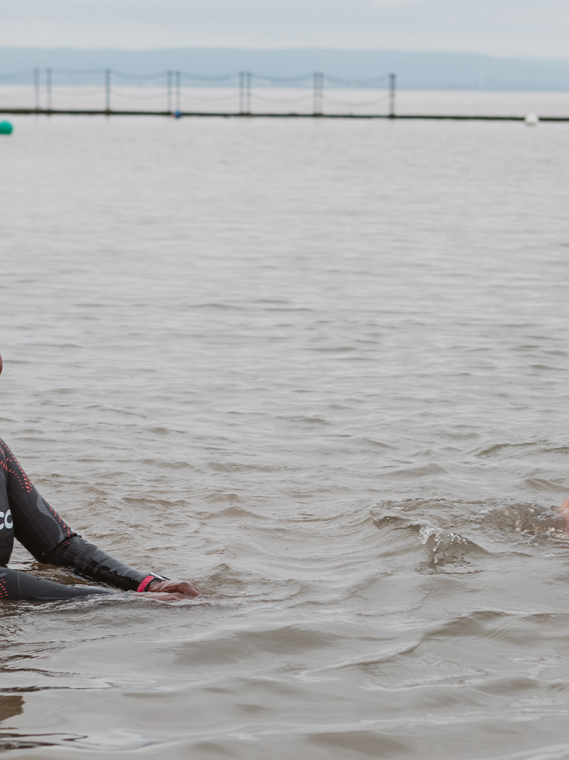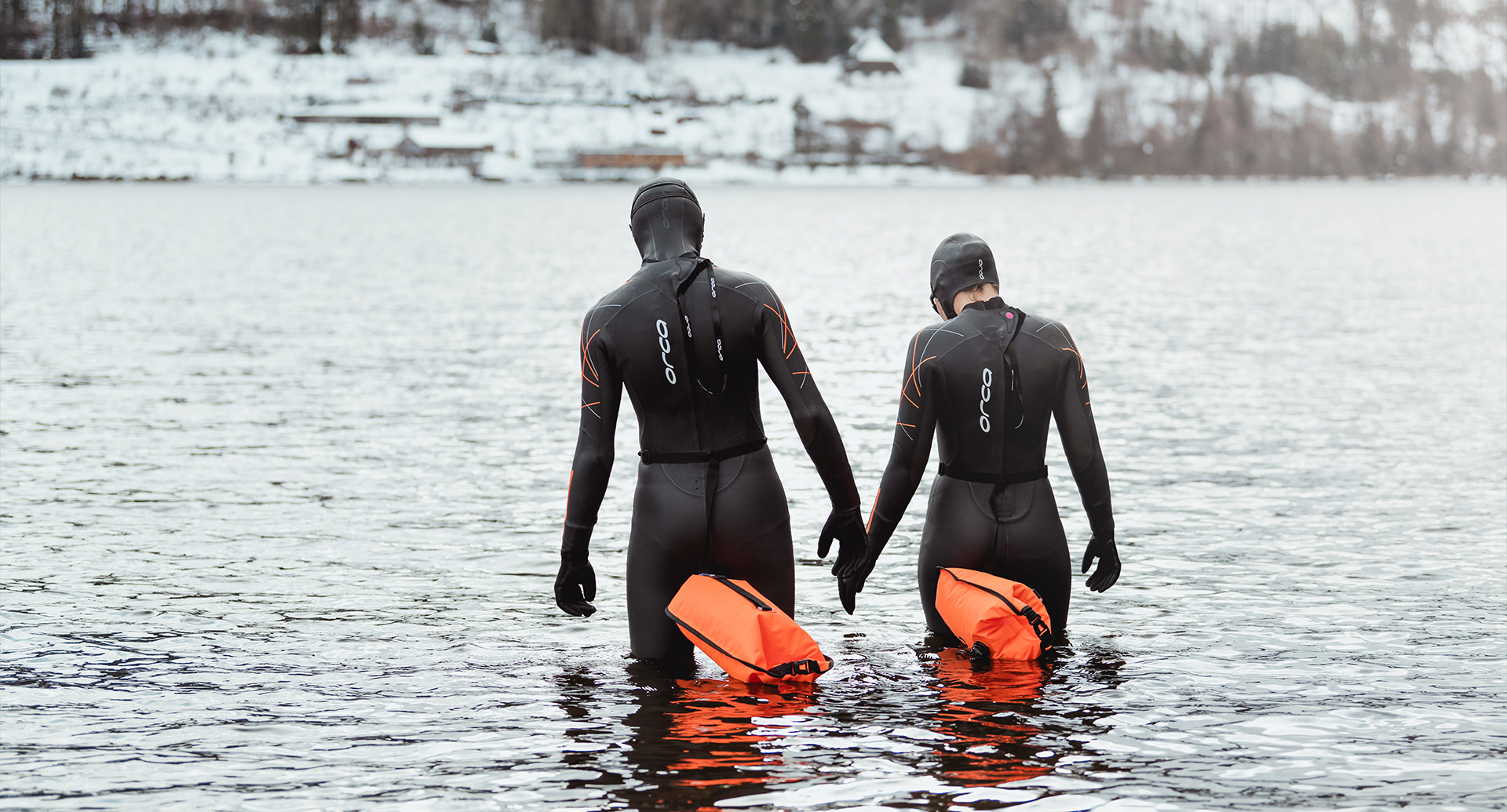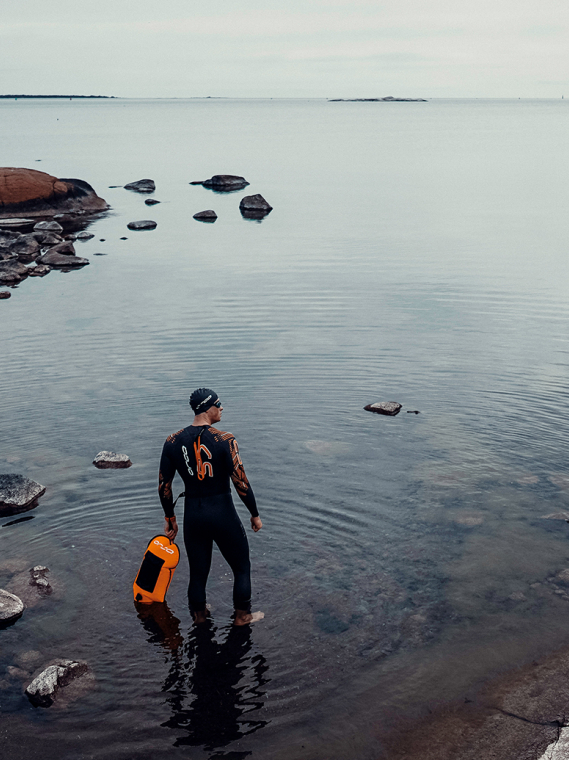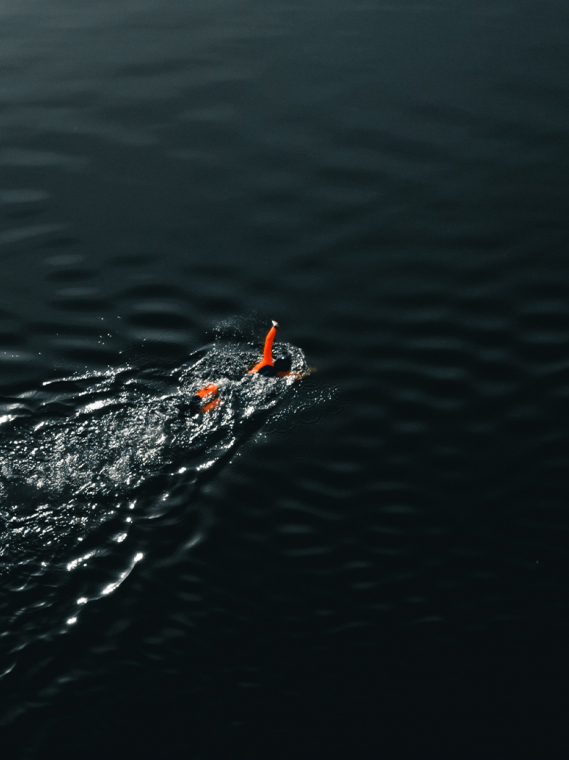
Getting ready for winter swimming
Orca
November 23, 2021
Kiki Watkin, Open Minds Active swim coach recounts how she caught the cold-water swimming bug and shares her useful tips for those looking to get star...
Swimming in cold waters is always challenging and an adventure. It is important to develop a pattern of habits that will allow you to enjoy this activity safely and securely.

Swimming in cold waters is always challenging and an adventure. It is important to develop a pattern of habits that will allow you to enjoy this activity safely and securely.
Here we'll give you some tips to help with recovery after your cold weather workout. This advice will surely be appreciated the next time you think about donning your wetsuit in the middle of February.
WARM UP AS SOON AS YOU GET OUT OF THE WATER
In fact, this entire article will focus mainly on body temperature recovery. No matter how much you prepare, swimming in cold waters inevitably causes your body temperature to drop, especially in your hands and feet. Body heat must be restored gradually and in a controlled manner at the end of your swimming session, since the risk of hypothermia continues even after physical activity if it isn't properly restored. This is why the first thing you should do is cover your body with a towel or bathrobe to start the process of regaining body heat. If you are wearing a wetsuit, it is better to keep it on for the first few minutes out of the water so as not to cause additional shock to your system. Once you begin to restore your body temperature, you can take it off.

WARM UP YOUR HANDS, FEET, AND FACE
These three areas are the most sensitive parts of your body after physical activity, so it is important to do everything you can to restore feeling to them. Rubbing your skin helps improve blood circulation to these areas, and using moisturizers can help speed up recovery. Once these areas begin to loosen up, you can bundle up with hats, socks, and gloves.

DRINK HOT BEVERAGES
Taking small sips from a thermos of coffee, broth, or any hot drink will help you raise your internal body temperature and warm up your hands and mouth. With a few sips, after having done the previous steps, your body temperature will slowly begin to rise, before you even get a chance to change into dry clothes!
As we have already mentioned, your body should regain its normal temperature gradually and shouldn't be rushed. Once you begin to get acclimated, a lukewarm shower will relax your body and help restore feeling to parts of it that may still be numb.

DO SOME GENTLE STRETCHING ONCE YOUR BODY TEMPERATURE IS BACK TO NORMAL
In the cold, your muscles stiffen and contract, so do not stretch them right after leaving the water. It is better to restore your body temperature first, and then go about your normal stretching routine. A good time to do these first soft stretches may be during your shower, where you will already have reached a good temperature. Don't forget to stretch your main muscle groups, such as the muscles of your thigh area and buttocks, your back, and shoulder areas, which are especially affected by the cold.

STAY ACTIVE
Keep your body moving for a while after your workout. This will increase circulation, helping your heart pump warm blood to the rest of your body.
We hope that the above tips will help you to enjoy swimming a little more, even in the coldest parts of the year and most extreme environments on our planet.

ABOUT ALBERT LAMAS
Albert Lamas is a coach, endorsed by the Catalan Swimming Federation. Having been involved in swimming from a young age, he considers himself a fan of this sport that he still participates in at the amateur level, both in the pool and occasionally in open water.
In addition to his education in engineering and career in computer consulting, he has been working and training for over a decade at the Club Natació Esplugues in Barcelona, where he continues to learn everyday and put everything he knows into practice to ensure that the athletes he trains feel just as good as he does in the water.


November 23, 2021
Kiki Watkin, Open Minds Active swim coach recounts how she caught the cold-water swimming bug and shares her useful tips for those looking to get star...

November 5, 2021
Open water swimming is undoubtedly an adventure. When doing so in lower than usual temperatures, the experience can become even more intense.

July 1, 2021
Bonnie Tsui brings us an excerpt from her book Why We Swim, a poetic and reflective essay on the act of swimming. An essential book for lovers of swim...